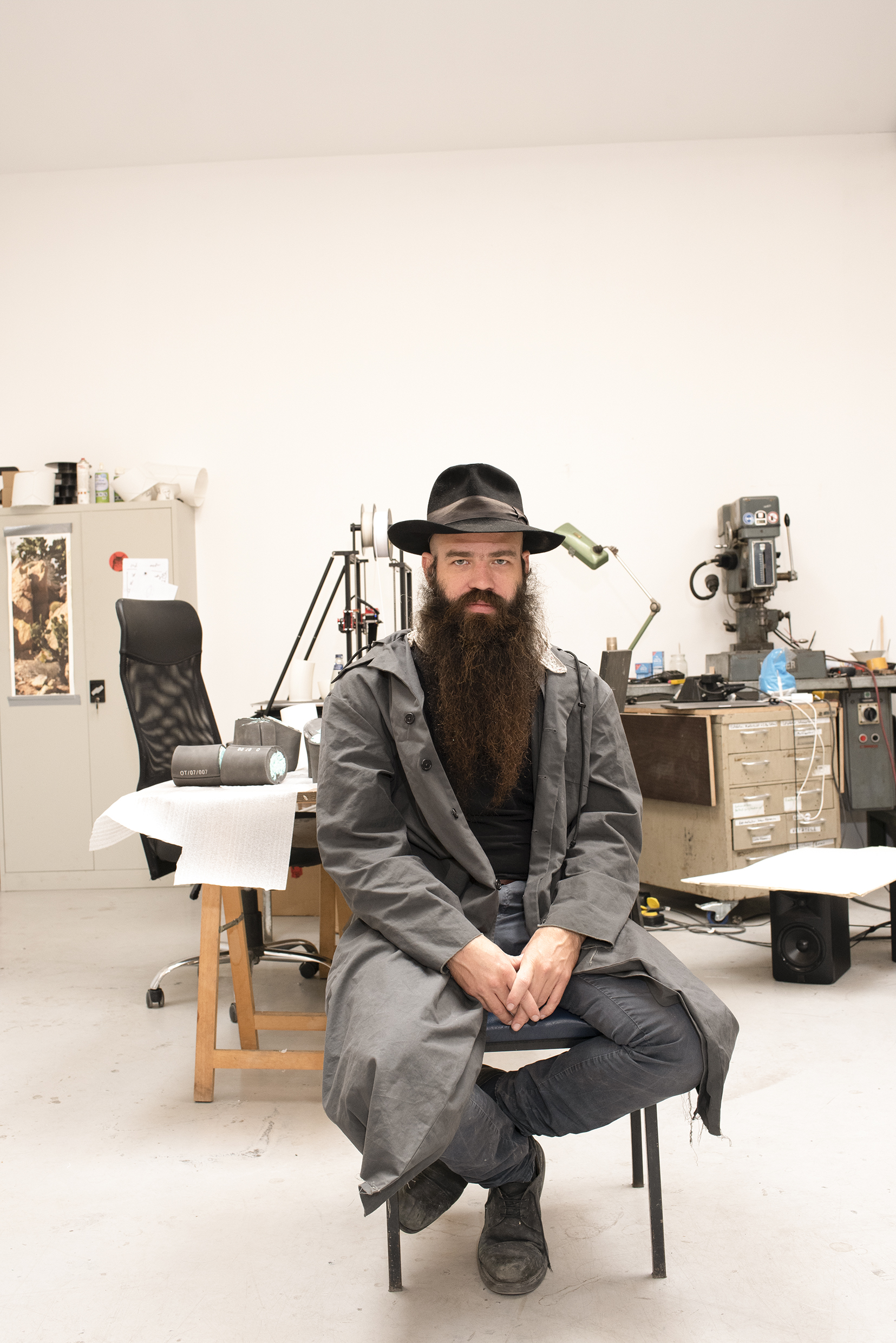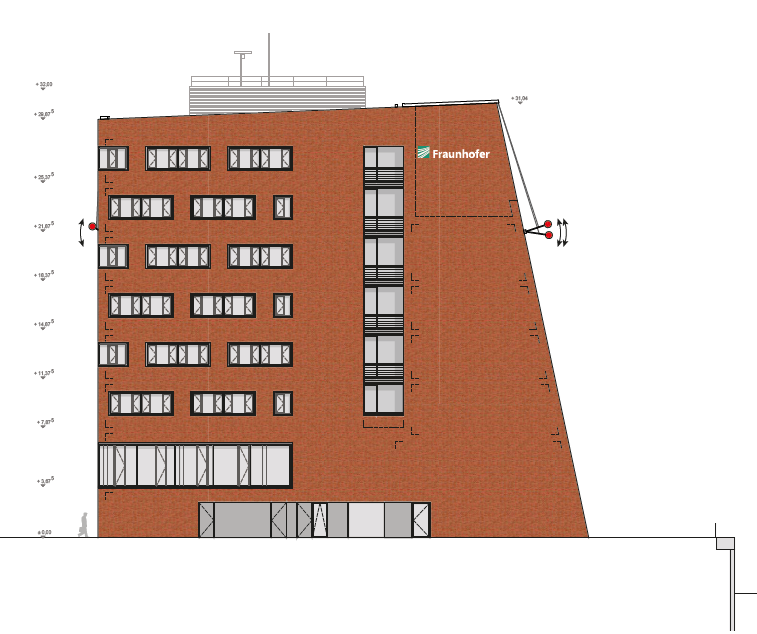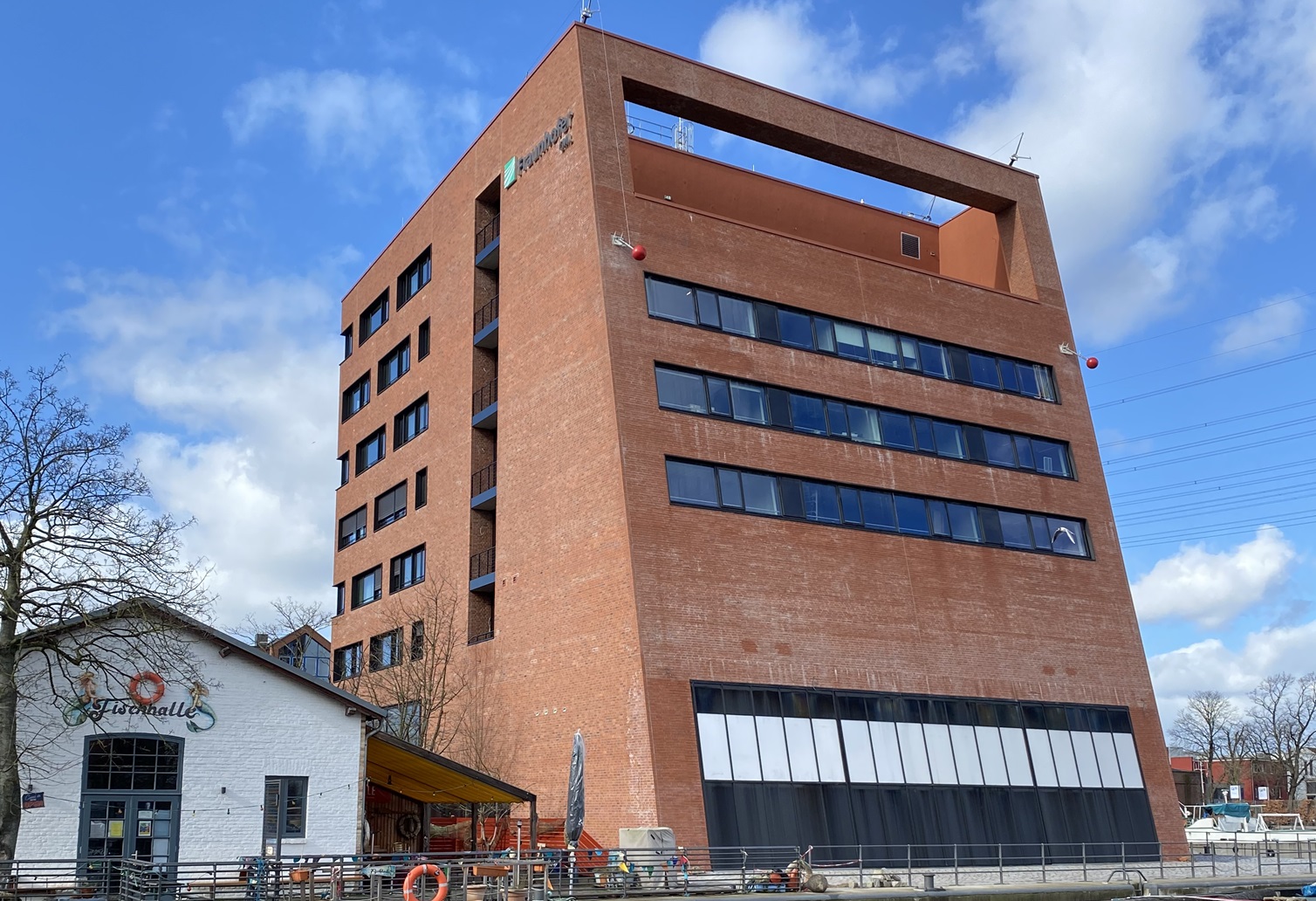Art in architecture: Interview with Julius von Bismarck
On Monday, 27 March 2023, Julius von Bismarck was a guest at the CML. He created the artwork "Ocean Apparatus". This involves four red buoys that are attached high up on our research building in Harburg's inland harbour. They move like real buoys on the open sea. These movements are based on real wave measurement data from buoys on the open sea. On Monday, Julius von Bismarck spoke to us about his creative process and his thoughts on "Ocean Apparatus".



What was the brief for this specific project?
It was quite open. For example, possible locations were mentioned where the artwork could be located, but nothing was specified. However, the artwork should have something to do with the research field "Maritime Sector". But it could also have been a picture or a sound installation, for example.
You have often dealt with the topics of the ocean and seas. What exactly attracts you to them?
The sea is a classic place of longing - for me too. It used to be considered hostile to life, then people thought they could control it. But awareness has continued to change: It's now more about preserving nature.
How did you approach the project?
I work a lot with movement. The attraction here was to bring movement into or onto a static building. The movements of the "Ocean Apparatus" are calculated on the basis of wave measurement data transmitted in real time from buoys located on the open sea. Depending on the weather conditions, the buoys appear to be floating slowly or swaying lively, spurred on by the raging sea.
How did you come up with the idea of the buoys?
On the one hand, through the building architecture. The new research building is like a stone ship. I had also worked with buoys before, albeit in a completely different context.
Are they real buoys?
No, but they come from a company that manufactures real buoys.
What material are the buoys made of?
Made of steel because of the fire protection
How many employees were involved in the construction?
Four
Were there any particular challenges in the project? Which ones?
Corona, because many schedules were delayed as a result: First there was nothing going on for a while, then everything came at the same time. And then the project is also very complex.
Have you developed art-in-architecture projects before? What is important to you?
Yes, since the pandemic. I think these kinds of projects are good because they are for people who don't necessarily go to museums. I'm not targeting a specialised audience, but the art is part of everyday life and at the same time more permanent. But I don't specialise in it.
The movement patterns come from real waves. Where exactly are they located?
We are currently using measurement data from the Atlantic Ocean near the Bay of Biscay. This is publicly accessible data. In future, however, I would like to work with the users of the building to decide which data we want to use and which ocean will surround the CML.
What effect do you expect art in architecture to have in general and this project in particular?
We are always happy to receive feedback. We have an Instagram channel and realise that the public is responding. The "Ocean Apparatus" installation is an invitation to visitors and employees of the Fraunhofer CML as well as the residents of Harburg to look at the sea in a new and different way.
What have you learnt from this project and what have you taken with you for other projects?
Interestingly, the technology was important first, then the artistic aspect. The measurement data comes from both main and secondary waves, is broken down mathematically and then predicted. It's all very complex. The artistic aspect doesn't necessarily have to have anything to do with technology - that's more of a niche. However, engineers, mechatronics engineers and architects also work in my studio. That's why the project suits us very well.
 Fraunhofer Center for Maritime Logistics and Services
Fraunhofer Center for Maritime Logistics and Services











